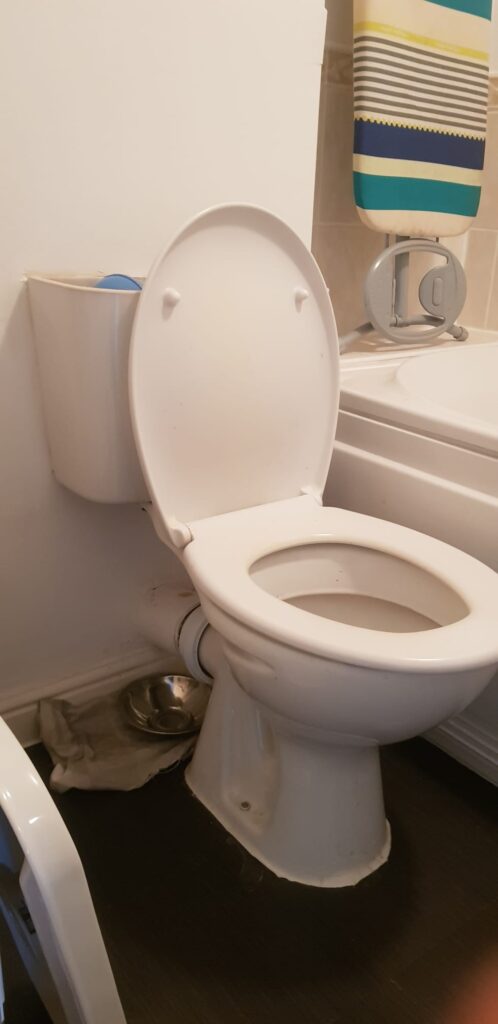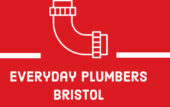Contact a plumber from Easton in Bristol
Everybody knows that there’s nothing wrong with having a dripping tap but once it’s being going on for a while it’s a real nuisance so what you really need to do is contact a plumber from Easton in Bristol who can come along and sort the tap out for you very quickly full stop we have got Plumbers available for you to deal with the problem right away.

You’re probably thinking that’s a plumber Easton is going to cost a fortune and that you’ll probably have to go and get a learned from the bank but no need for that here because our plumbers down in Easton are very reasonably priced so you can rest assure that you will get a first class plumber in Easton Bristol and the job will be done for a fantastic plumber Easton price.
Do you want plumber Easton BS5 to come?
Don’t worry if you’re not used to calling a plumber in Easton because we are regulars down in Easton and we live nearby. it doesn’t matter what problem you have and if you want plumber Easton BS5 to come and repair a dripping tap or a dripping shower.
It doesn’t really matter because we can fix all matters related to plumbing so you don’t need to worry about anything whether it’s a leak or a dripping tap or a shower that is not mixing the water at the right temperature. have you ever wondered why it is that plumbers can repair leaks so quickly because they have got many years of experience.
So what might take the average person a long time to complete will only take a plumber Easton a very short time.
Easton plumbing problems are dealt with fast
As a plumber Easton we are able to deal with all of your plumbing issues night or day it doesn’t really matter when it happens or what the plumbing problem is we can come to deal with it instantly and make sure that’s all of your plumber Easton plumbing problems are dealt with fast.
You have probably had to deal with other plumbers East on in the past who may not have had your best interests at heart when it comes to dealing with plumber Easton plumbing problems such as dripping tabs or leaking pipes or perhaps you have a plumber emergency problem and need to get it dealt with fast. make sure next time you have your plumbing emergency that your contact us because we operate a plumber Easton service in the whole of the area so there is no job that is a problem for us if it is plumbing related.
Are you worried about you have a plumbing problem in your house or business and you need a plumber Easton to come and repair a plumbing problem such as a leaking shower because there is water causing damage to your property then you need to make sure you call plumber Easton to come by and deal with the plumbing emergency straight away as there is no plumbing problem we are not used to dealing with as plumber Easton we are capable of dealing with leaks

Plumber Easton BS5 Bristol: Installing a Perforated Drainage Pipe
When it comes to managing water drainage around your property in Easton, BS5 Bristol, one essential aspect is installing a perforated drainage pipe. This crucial component ensures that excess water is efficiently channeled away from your property, preventing water damage, flooding, and other potential issues. In this comprehensive guide, we will explore the importance of a perforated drainage pipe and provide you with step-by-step instructions on how to install one.
Why is Proper Drainage Important?
Before delving into the installation process, let’s understand why proper drainage is crucial for any property.
Preventing Water Damage
Excess water around your property can lead to structural damage, mold growth, and erosion. A perforated drainage pipe helps prevent these issues by directing water away from your home’s foundation.
Flood Prevention
In areas prone to heavy rainfall, such as Easton, BS5 Bristol, flooding can be a significant concern. A perforated drainage pipe can effectively reduce the risk of flooding by efficiently draining excess water.
Landscape Preservation
Proper drainage also benefits your landscaping. It prevents soil erosion, preserves the integrity of your garden, and ensures the health of your plants and trees.
Materials and Tools Needed
Before you start the installation process, gather the following materials and tools:
Materials
- Perforated drainage pipe
- Gravel
- Landscape fabric
- PVC pipe connectors
- Drainage fittings
- PVC cement
- Marker flags
Tools
- Shovel
- Tape measure
- Spirit level
- Hacksaw
- Utility knife
- Rubber mallet
- Work gloves
- Safety glasses
Planning the Installation
1. Determine the Drainage Path
The first step is to plan the drainage path. Identify the areas where water tends to accumulate and the direction in which you want it to flow away from your property.
2. Measure and Mark
Measure the length of the drainage path and mark it using marker flags. This will provide you with a clear outline for digging.
3. Check for Permits
Before proceeding, check if you need any permits or approvals for drainage work in your area. Compliance with local regulations is essential.
Installation Steps
4. Dig the Trench
Using a shovel, dig a trench along the marked path. Ensure the trench is deep and wide enough to accommodate the drainage pipe and gravel.
5. Add Gravel
Place a layer of gravel at the bottom of the trench. This will aid in water filtration and prevent clogs in the drainage pipe.
6. Lay the Pipe
Position the perforated drainage pipe on top of the gravel bed. Make sure it follows the marked path and has a slight downward slope for proper water flow.
7. Connect Fittings
Use PVC pipe connectors and drainage fittings to connect the pipes. Secure them with PVC cement to create a watertight seal.
8. Cover with Landscape Fabric
Place landscape fabric over the pipe to prevent soil and debris from entering and clogging the system.
9. Backfill with Gravel
Cover the pipe and fabric with another layer of gravel. Ensure that the pipe remains secure and level.
10. Test the System
Run water through the system to check for proper drainage. Make any necessary adjustments to ensure efficient water flow.
Installing a perforated drainage pipe around your property in Easton, BS5 Bristol, is a vital step in protecting your home and landscaping from water damage and flooding. By following the steps outlined in this guide, you can successfully create an effective drainage system that will serve you well for years to come.
Plumber Easton, Bristol, BS5: Installing a Perforated Drainage Pipe
When it comes to managing water drainage around your property in Easton, BS5 Bristol, one essential aspect is installing a perforated drainage pipe. This crucial component ensures that excess water is efficiently channeled away from your property, preventing water damage, flooding, and other potential issues. In this comprehensive guide, we will explore the importance of a perforated drainage pipe and provide you with step-by-step instructions on how to install one.
Why is Proper Drainage Important?
Before delving into the installation process, let’s understand why proper drainage is crucial for any property.
Preventing Water Damage
Excess water around your property can lead to structural damage, mold growth, and erosion. A perforated drainage pipe helps prevent these issues by directing water away from your home’s foundation.
Flood Prevention
In areas prone to heavy rainfall, such as Easton, BS5 Bristol, flooding can be a significant concern. A perforated drainage pipe can effectively reduce the risk of flooding by efficiently draining excess water.
Landscape Preservation
Proper drainage also benefits your landscaping. It prevents soil erosion, preserves the integrity of your garden, and ensures the health of your plants and trees.
Materials and Tools Needed
Before you start the installation process, gather the following materials and tools:
Materials
- Perforated drainage pipe
- Gravel
- Landscape fabric
- PVC pipe connectors
- Drainage fittings
- PVC cement
- Marker flags
Tools
- Shovel
- Tape measure
- Spirit level
- Hacksaw
- Utility knife
- Rubber mallet
- Work gloves
- Safety glasses
Planning the Installation
1. Determine the Drainage Path
The first step is to plan the drainage path. Identify the areas where water tends to accumulate and the direction in which you want it to flow away from your property.
2. Measure and Mark
Measure the length of the drainage path and mark it using marker flags. This will provide you with a clear outline for digging.
3. Check for Permits
Before proceeding, check if you need any permits or approvals for drainage work in your area. Compliance with local regulations is essential.
Installation Steps
4. Dig the Trench
Using a shovel, dig a trench along the marked path. Ensure the trench is deep and wide enough to accommodate the drainage pipe and gravel.
5. Add Gravel
Place a layer of gravel at the bottom of the trench. This will aid in water filtration and prevent clogs in the drainage pipe.
6. Lay the Pipe
Position the perforated drainage pipe on top of the gravel bed. Make sure it follows the marked path and has a slight downward slope for proper water flow.
7. Connect Fittings
Use PVC pipe connectors and drainage fittings to connect the pipes. Secure them with PVC cement to create a watertight seal.
8. Cover with Landscape Fabric
Place landscape fabric over the pipe to prevent soil and debris from entering and clogging the system.
9. Backfill with Gravel
Cover the pipe and fabric with another layer of gravel. Ensure that the pipe remains secure and level.
10. Test the System
Run water through the system to check for proper drainage. Make any necessary adjustments to ensure efficient water flow.
Installing a perforated drainage pipe around your property in Easton, BS5 Bristol, is a vital step in protecting your home and landscaping from water damage and flooding. By following the steps outlined in this guide, you can successfully create an effective drainage system that will serve you well for years to come.
FAQs
1. How deep should the drainage trench be?
The trench should be deep enough to accommodate the drainage pipe and allow for proper water flow. Typically, a depth of 12-18 inches is suitable.
2. Can I use a different type of pipe for drainage?
While perforated drainage pipe is commonly used, you can consult with a professional plumber Bristol to determine the best type of pipe for your specific drainage needs.
3. Is it essential to use landscape fabric?
Landscape fabric helps prevent soil and debris from entering and clogging the drainage system, making it a valuable addition to the installation.
4. Can I install a perforated drainage pipe on my own?
With the right tools and instructions, it is possible to install a perforated drainage pipe as a DIY project. However, if you have concerns, it’s advisable to seek professional assistance.
5. How often should I inspect and maintain the drainage system?
Regular inspections are recommended, especially after heavy rainfall, to ensure that the system remains clear and functional. Maintenance may be required periodically to keep it in optimal condition.
